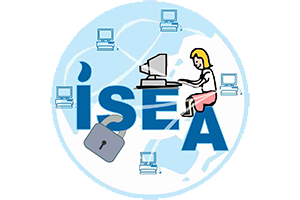Don’t give your personal details of whereabouts : Don't post specific personal information online, such as travel dates, location and time of the movie you plan to watch, evening classes that you take etc.,
Keep contact information private : Beware of strangers.
Friends:
- Better avoid strangers as friends when requests are received.
- Don't share your personal information profile information
- Irrespective of genders as they may post abusive/indecent messages when the relations are strained with them.
Be aware of following risks
- Spam
As we all know that spam is usually unwanted e-mail advertising about aproduct sent to list of e-mails or group ofe-mail addresses. Similarly spammers are sending the unwanted mails or messages to the billions of users of social networking sites which are free; and are easily accessible by spammers to gatherthe personal information of theunsuspecting users.
- Scams:
Online scammers generally send an email or message with a link to the user which ask for the profile information and tell the user that it would add new followers. These links sent to the use rwould be similar to applications, games etc. So whenever the user post his details in the link, the details will be received by scammers and information would be misused.
- Malicious application
Malicious application might come through different application while using or installing software’s. Similarly, clicking on the social networking application starts the application installation process or link to view the video, etc. In order to fulfil its intended operation the application requests for some elevated privileges from the user like access to my basic information, update on my wall, post on my wall, etc .
- Clickjacking
Generally, clickjacking is a malicioustechnique of tricking Web users intorevealing confidential information ortaking control of their computer whileclicking on seemingly innocuous Webpages. Vulnerability across a variety ofbrowsers and platforms, a clickjackingtakes the form of embedded code orscript that can run without the user’sknowledge. The same is followed in thesocial networking domain. The objectivebehind such an attack is that users can betricked into clicking in the links, icons,buttons etc, which could trigger runningof processes at the background withoutthe knowledge of the user
- Phishing
As we all know the phishing attack iscreation of fake site just similar tooriginal site. Similarly these days even social networking phishing has come indifferent flavours just like phishingattacks on banks and popular tradingwebsites. Social networking phishing hascome up with fake mails and messageslike offering some specialized themes,updating the profile, updating thesecurity application/features etc. Inorder to see the updates the user needs tofollow a link and log in, through which thecredentials are taken by the attacker. Thelinked page is a fake copy of the originallogin page, focused on stealing useraccount credentials.
Guidelines
- Don’t give or post any personal information like your name, address of the School / Home, Phone numbers, Age, Sex, Debit /Credit card details in Cyber Space.
- The information which was posted by you in online can be seen by everyone who is online because internet is the world’s biggest information exchange tool. Many people who are having access to the site which you are using can access your profile and get all the information what you have posted. The persons who are having access to your profile may include good persons like your friends, parents, and teachers. Not the strangers.
- Be aware that the information you give in the sites could also put you at risk of victimization
- Change your password frequently, and avoid clicking links that purport to send you back to the social network site. Instead, type the site’s address directly into your browser (or follow a bookmark you’ve previously saved) to get back to your account
- While accepting the friends on Social Networking sites, be selective. Add people as friends to your account / site if you know them in real life, allow only selective people to send friend requests by using your email ID/Mobile number you provided to them.
- Never meet in person with anyone whom you met on Social Networking site because some of the people may not be who they say they are.
- Take your parents’ permission if you want to meet the person whom you met in the networking site.
- Most of the Social Networking web sites enabling users to set privacy controls for who has the ability to view the information like photos, contact details and updates. Never allow search engines to find you outside of social networking sites, search with your name. So enable such privacy settings.
- Do not post anything which harm to your family credibility
- Never post photographs, videos and any other sensitive information to unknown persons in Social network sites
- If you think that your social networking account details have been compromised or stolen, report your suspicions to the networking site support team immediately.
- Never respond to harassing or rude comments which are posted on your profile.
- Delete any unwanted messages or friends who continuously leave inappropriate comments and immediately report those comments to the networking site.
- Do not post your friends information in networking sites without their permission, which may possibly put them at risk. Protect your friends by not posting the group photos, school names, locations, ages, sex…etc
- Avoid posting the future plans and activities which you are going to do in networking sites
- Check the privacy settings of the Social Networking sites and set the settings in such a way that the people can only be addedas your friend if you approve them also set the settings in such a way that the people can only view your profile if you haveapproved them as a friend.

